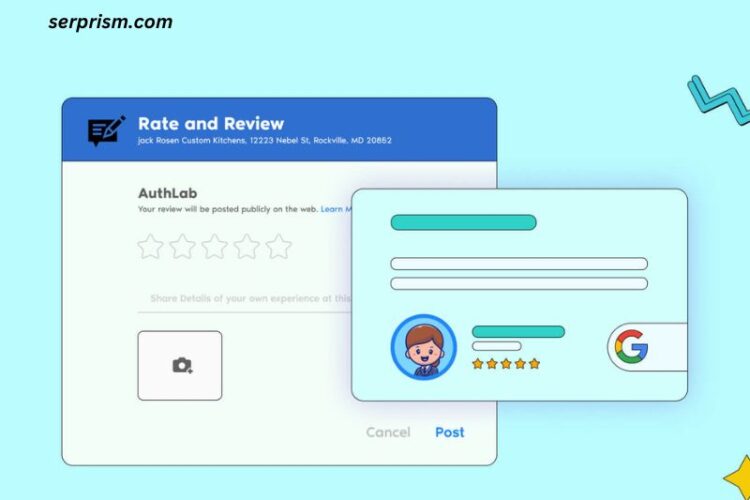
In today’s digital landscape, optimizing online content for search engines is a key component of digital marketing. However, SEO is not just limited to text-based content. Images also play an essential role in SEO, and managing them effectively can have a significant impact on your website’s visibility. One aspect of image SEO that is often overlooked is metadata – the hidden data that accompanies an image file. Additionally, understanding the publish date and how it affects SEO is crucial for ensuring that your content remains relevant and discoverable. In this article, we will delve into the importance of deleting image SEO data and how to handle publish dates effectively when managing online content.
Understanding Image SEO and Metadata
Before we dive into the concept of deleting image SEO data and handling publish dates, let’s first understand what image SEO entails.
Images are an important part of user experience (UX) and website engagement. However, search engines like Google cannot “see” images in the same way humans can. Instead, they rely on the metadata associated with an image to understand what it represents. Metadata for images includes the following components:
- Alt Text (Alternative Text): Alt text is a description of the image that is read by search engines and displayed when the image is unavailable. It’s an important aspect of SEO as it helps search engines index the image content appropriately.
- File Name: The name of the image file is another important factor in SEO. A well-named image file can give search engines a clue about the content of the image and its relevance to specific keywords.
- File Size and Format: The size and format of an image also impact its SEO. Large file sizes can slow down website loading times, which negatively affects user experience and SEO. Images should be optimized to be lightweight while maintaining quality.
- Image Title and Captions: In addition to alt text, titles and captions can also be used to provide further context for an image.
- EXIF Data: EXIF (Exchangeable Image File Format) is additional metadata embedded in an image file, often by the camera that took the photo. It can contain information such as the date and time the image was taken, camera settings, and geographical data (GPS coordinates).
Why Deleting Image SEO Data Can Be Important
While metadata provides valuable SEO benefits, there are times when you might want to remove or edit certain image data. Below are a few scenarios where deleting or modifying image SEO data can be beneficial.
1. Privacy Concerns and Data Sensitivity
EXIF data, for example, can include sensitive information like GPS coordinates, camera details, and even the time the image was taken. This data may inadvertently expose the photographer’s location or time of capture, which could be considered a privacy risk. Deleting EXIF data before uploading images to your website is a good practice to ensure sensitive information is not inadvertently shared.
2. Content Relevance
If you are updating old blog posts or articles with new images, you may want to remove outdated metadata. Old images may contain alt text, file names, or titles that no longer align with the current content. Updating these details can help ensure that the image aligns with the article’s SEO strategy and keywords.
3. Preventing Keyword Stuffing
Some websites may try to manipulate SEO by adding excessive keywords to image alt text, filenames, or captions. While keywords in image metadata are important for SEO, keyword stuffing can lead to penalties by search engines. If your images have keyword-heavy metadata that isn’t authentic or relevant, removing or editing this data could prevent any negative SEO consequences.
4. Reducing File Size for Faster Load Times
Sometimes, images may come with extraneous metadata that bloats the file size without contributing to SEO. By deleting unnecessary data and optimizing the image, you can reduce file size, which in turn improves page loading times – a crucial ranking factor for SEO.
How to Delete Image SEO Data
There are various ways to delete image SEO data, depending on the type of data you are targeting.
1. Deleting EXIF Data
EXIF data can be removed using a variety of tools. Some popular methods include:
- Using Photoshop: If you’re working with Adobe Photoshop, you can open the image, click on “File,” and then select “File Info.” Here, you can remove any metadata attached to the image.
- Using Online Tools: Websites like ImageOptim or EXIF.tools allow you to upload an image and strip out all EXIF metadata quickly and efficiently.
- Using Software: Tools like GIMP (a free, open-source alternative to Photoshop) and IrfanView can also remove EXIF data.
2. Removing Alt Text, Title, and Captions
If you are using a content management system (CMS) like WordPress, Joomla, or Drupal, you can easily edit the alt text, title, and captions directly from the image settings in the media library.
For WordPress, follow these steps:
- Navigate to the Media Library and click on the image you want to edit.
- You’ll see fields for the image’s Title, Alt Text, and Caption.
- You can remove or edit these fields as needed.
3. Optimizing Image File Size
To remove unnecessary data from an image file and optimize its size, you can use image optimization tools such as:
- TinyPNG: A popular online tool that compresses images without sacrificing quality.
- ImageOptim: A desktop application that optimizes images and removes unnecessary metadata.
- Squoosh: A free web-based tool for compressing and optimizing images.
By using these tools, you can remove extraneous metadata and reduce the file size for better performance.
Publish Date and SEO
The publish date of a piece of content plays an important role in its SEO, especially for news-based or time-sensitive content. Search engines consider the publication date when determining the relevance of content. Fresh, timely content typically gets a boost in rankings, particularly for searches related to recent events or trending topics.
Importance of Publish Date in SEO
- Timeliness and Relevance: Search engines prioritize fresh content for certain types of queries. For example, if someone is searching for “latest iPhone release,” Google will want to display results that are up to date, typically from within the last few days or weeks.
- Structured Data: Many websites use structured data (Schema.org) to mark up the publish date. This helps search engines understand when the content was published and index it appropriately.
- Search Intent: If the search query includes a time-related element (e.g., “2024 trends” or “October 2024 news”), search engines will likely prioritize content with the most recent publish date.
Managing Publish Date Effectively
When managing your website’s content, ensure the correct publish date is displayed, particularly for articles, blog posts, or news releases. Here are some tips for handling publish dates in SEO:
- Set Accurate Dates: Always ensure that the publish date is correct. Incorrect publish dates can confuse search engines and users alike.
- Update Old Content: If you’re updating an old blog post or page, make sure to update the publish date as well. Fresh content with a recent publish date is more likely to rank well.
- Use Structured Data: Implement structured data (Schema.org) to mark up the publish date of your content. This ensures that search engines can easily identify when content was published or last updated.
- Consider “Evergreen” Content: If you are creating content that doesn’t have an expiration date (evergreen content), it may be better to avoid marking it with specific publish dates. This helps prevent the content from looking outdated in search results over time.
- Remove or Update Expired Content: If a post is outdated and no longer relevant, it might be a good idea to remove it or update it to keep the content fresh and useful.
Conclusion
Managing image SEO data and understanding the impact of publish dates are essential components of a well-rounded SEO strategy. By deleting unnecessary or outdated image metadata, you can improve your website’s performance, enhance privacy, and avoid penalties for keyword stuffing. Additionally, understanding how to properly manage publish dates ensures that your content remains timely, relevant, and optimized for search engines.
The key takeaway is that both image SEO data and publish dates are integral to maintaining high SEO standards and ensuring that your content is discoverable and competitive in search engine results pages (SERPs). By keeping metadata clean and up-to-date, and making sure your publish dates are accurate, you can improve both user experience and search engine rankings.
In the ever-evolving world of SEO, staying on top of these details can make the difference between staying relevant and getting lost in the noise of outdated content and poor optimization.




